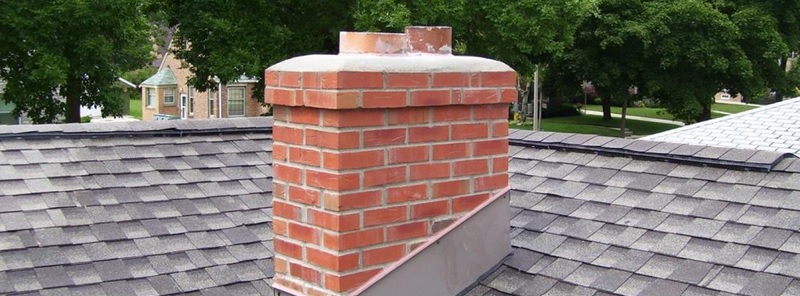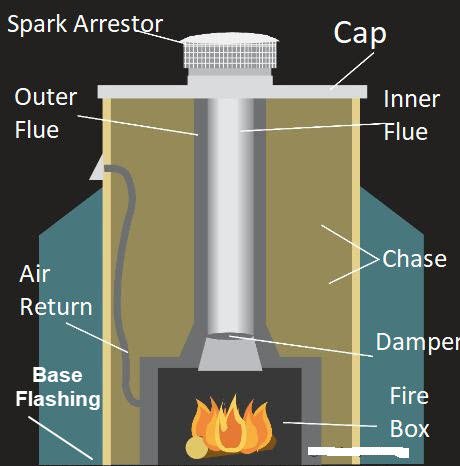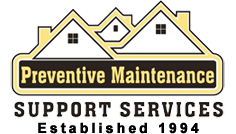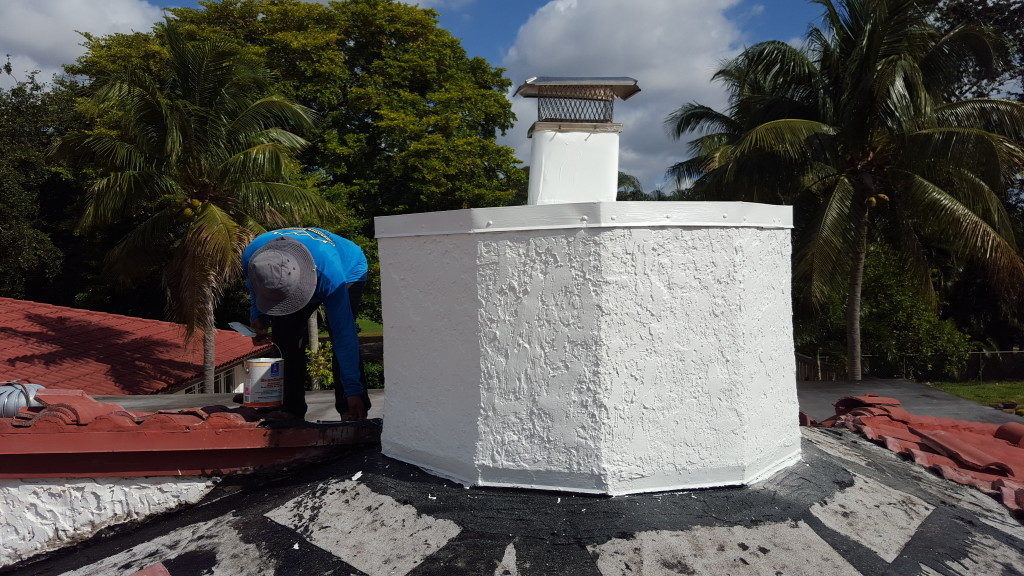
Chimney Repair Company
Perhaps you are tired of getting your chimney repaired over and over again, or you are trying to get estimates for chimney repairs. You might already be facing several issues. The stucco guy will probably say that, as he’s not a carpenter, he will not change the rotten wood. The carpenter can fix the wood part but will advise a roofer to take care of the damage at the bottom of your chimney. Thus, it can be difficult to find someone who can take complete responsibility for chimney repairs. However, there is no need to fret, as help is just a call away. Get professional help from us and allow our dedicated crew to handle all your woes related to chimney repairs. As licensed building, roofing, and chimney contractors, we are confident in handling everything from chimney replacement, fireplace chimney repair, and chimney leak repair to the carpentry, stucco, and roofing.
Get your local chimney repair now. Call (561) 239-1151 or contact us for a free estimate and be confident of enjoying timely and professional service, well within your budget.
Contact us
Repair Leaking Chimney
Many homes have chimneys in South Florida. We don’t really use them often or look at them much never mind think about maintaining them, but they can develop serious problems if left unattended for too long. It is stressful and confusing trying to find someone to repair a chimney for the average homeowner as you may well know. If the chimney starts to leak or crumble it can also be difficult to isolate the problem and find the right company to fix it. To help you do that we first need to look at the anatomy of a chimney.
Chimney Repair
Many homes have chimneys in South Florida. We don’t really use them often or look at them much never mind think about maintaining them, but they can develop serious problems if left unattended for too long. It is stressful and confusing trying to find someone to repair a chimney for the average homeowner as you may well know. If the chimney starts to leak or crumble it can also be difficult to isolate the problem and find the right company to fix it. To help you do that we first need to look at the anatomy of a chimney.
Common Chimney Defects
- The first sign of chimney distress is water stains on your ceiling. It can be difficult to determine if the cause is the roof or the chimney as the roof and chimney meet in what is called the base flashing.
 The base flashing is typically considered a roofing issue (don’t worry, we are licensed building and roofing contractors).
The base flashing is typically considered a roofing issue (don’t worry, we are licensed building and roofing contractors).
- The walls on your chimney are called chases. The chimney chase can be made of concrete but more typically, wood frame and stucco. If you see a lot of cracks in the chase or chunks of stucco missing your chase is compromised. This is caused by little cracks in the stucco that develop over time thereby allowing water to rust the wire lath contained within the stucco. Rusting wire lath expands cracking the stucco and allowing more and more water in. If you’re lucky the stucco can be replaced but is some cases the plywood sheathing of the wall will need to be replaced as well. If the problem is chronic, structural members may need to be replaced as well.
- The top of the chimney is sealed with a metal cap. If the cap is made with galvanized metal, it may rust and allow water to leak inside. The hot gas from the fireplace exits through the chimney flue on top of which sits a spark arrestor. The spark arrestor’s function is to stop burning embers from raining down on your roof causing a fire.
Chimney Construction
Chimneys are typically made of wood framing, wire lath and have a covering made of stucco (the chase). With time and usage, it is seen that most chimneys develop small cracks in the stucco finish. The result is that water can seep in and rust the wire lath that will then swell and pops the stucco. This can lead to even bigger cracks and more problems. The condition is known as spalling (expanding rusted wire lath in stucco), and one can expect even more water to seep in allowing the moisture to rot the wood framing. As it can be complicated to repair a chimney, it is essential to know the basics and leave the repair to the experts.
Chimney Contractor
See the rotten wood behind the wire lath and stucco in the next image. In many situations, the wood is completely gone because of its rotten state. The right way to repair chimney structures is by using pressure treated lumber. This ensures that the rotten wood doesn’t come back. The stucco of the repaired chimney should be painted every couple of years so as to makes sure that there are no small cracks and keep them away. Or, the problem can resurface again.
The Right way to Apply Stucco on a Chimney Repair
Start the process of applying new stucco only after all the rusted wire lath and rotten wood is replaced. Apply at least three coats of stucco on chimneys that comprise of scratch, brown and finish coat. Give ample drying time between the applications of each layer ad the whole process can take several days and trips. The process of painting a new stucco is called “thirsty” and in order to get a good finish and new look, apply several coats of paint.
History of the Chimney
When homes were first built, they didn’t have a chimney. Even though most early homes were heated by fire, chimneys were not the original way of getting smoke out of the house.
The Romans used tubes in the walls, while those with very large homes had plenty of space for the smoke to dissipate. It was also common for the fire to be set in the middle of the room with smoke simply filling the house. It would escape through holes found in the walls and roof, but many homes just remained smoke-filled during colder times of the year.
When Was the Chimney First Used?
While an exact date for the first use of a chimney isn’t clear, it’s likely the first chimney found in Europe wasn’t until the 12th century. Many chimneys were destroyed in Venice in 1347 by an earthquake, and several were seen in Padua, Italy by 1368. The Conisbrough Castle in Yorkshire had a chimney, dating back to 1185. While chimneys might have been in use in some places as early as the 12th century, they were still not common in homes until around the 16th or 17th centuries.
One of the reasons it took so long for chimneys to become widespread was the original design. Fireplaces were very deep in most homes to allow for indoor cooking, and a simple brick chimney would not eliminate the smoke efficiently from this type of fireplace. Therefore, until the 18th century chimneys were not considered to be very effective at eliminating smoke from the home.
A Better Understanding of Heat
As scientists gained a better understanding of heat chimneys became more useful. Originally, scientists saw heat as a fluid. They believed smoke was carried by the fluid and moved from a warmer region to a colder region. According to this theory, it was necessary for the home to become warm enough for the smoke to travel up the chimney and out the house.
Louis Savot, a physician in Paris, studied smoke and chimneys, and he came to the conclusion that narrowing the fireplace and using a smooth flue would allow for a better chimney design. While this was a helpful change, it didn’t do much for the many deep for cooking fireplaces throughout Europe.
Benjamin Franklin increased the efficiency of heating homes with the invention of the Pennsylvanian Fire Place in the 1740s. Franklin also invented the Franklin Stove in 1771, designed for more efficient burning of fuel and less smoke in the air.
Several other fireplace inventions helped to advance the chimney over the years. The Rumford stove helped to eliminate smoke and heat from kitchens through the Victorian Era. However, by the 18th century, new central heating innovations began to surface. Many chimneys became decorative and rarely used by the mid-20th century.
Today, chimneys feature several different designs with the ability to move smoke efficiently out of the fireplace before it enters the home. Many homeowners choose a design featuring a fireplace and chimney, not for the ability to heat the home, but mostly for aesthetic reasons.
At Forward Engineers, we seek to not only be a design and consulting firm but to also educate our clients about engineering technology (and history). While doing so, we inevitably refresh our own knowledge and sometimes even learn something ourselves. If you are seeking to work with an engineering firm that is client-centered and strives to provides services that are on time, on budget and exceed expectations, please contact us. We would love to work with you on your next project!




